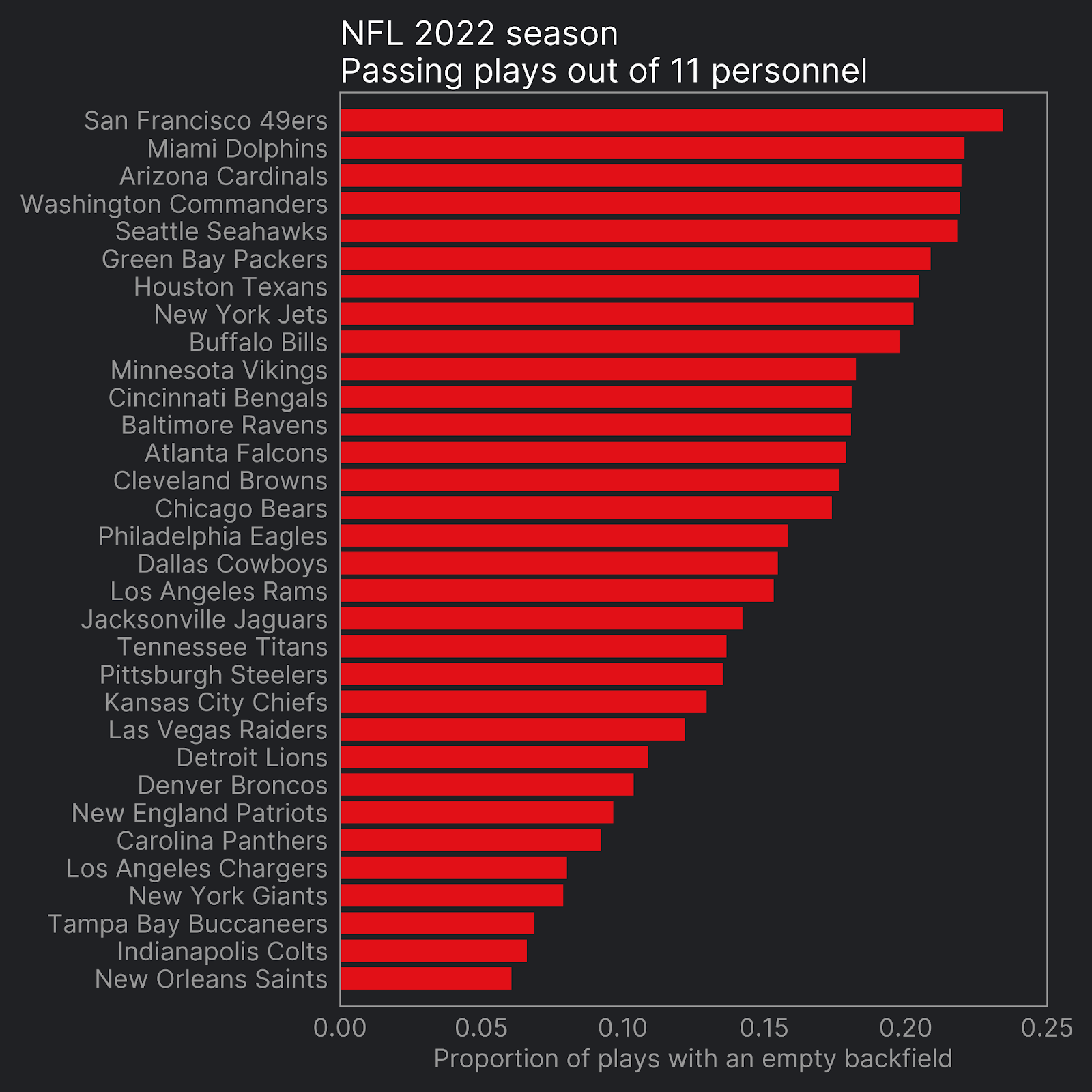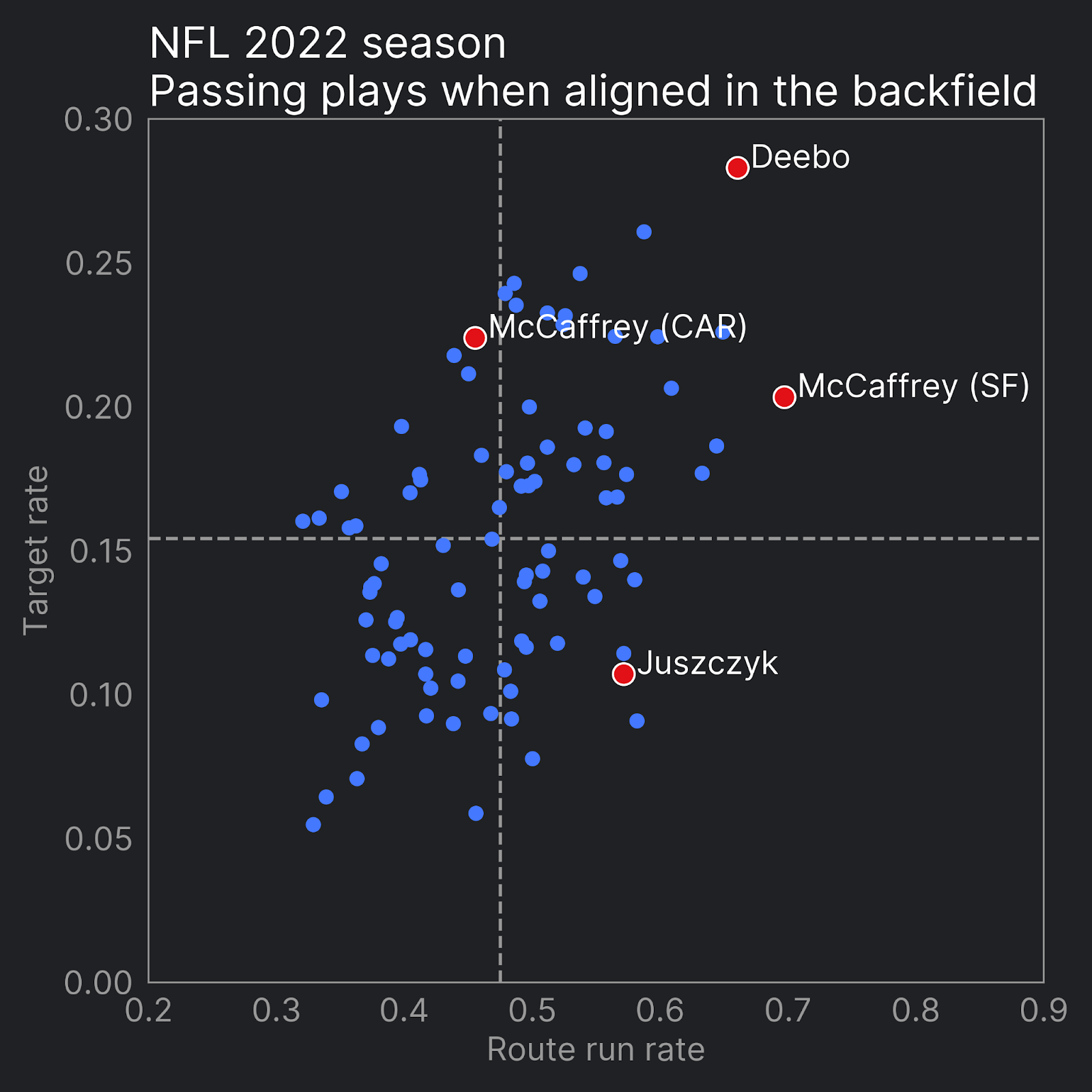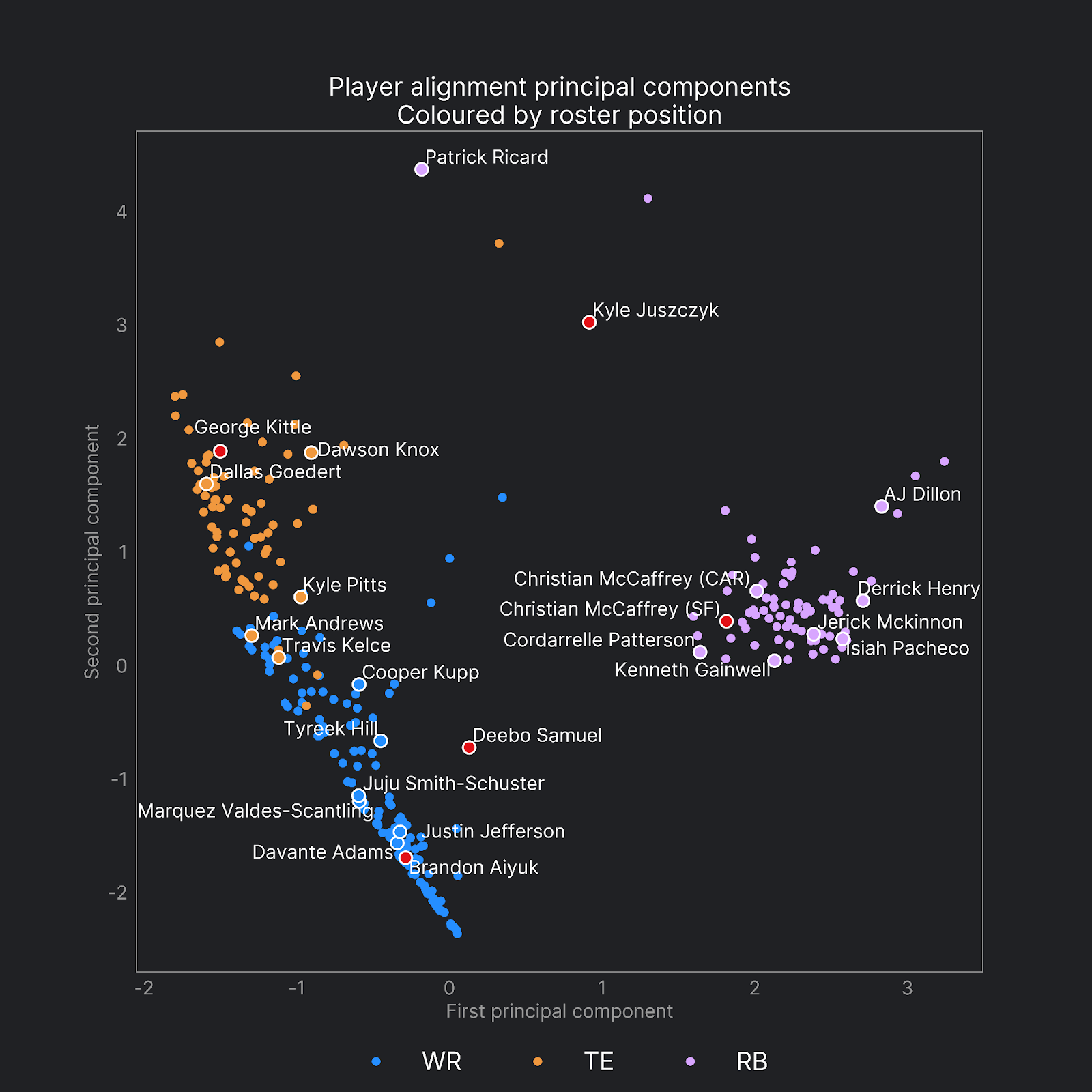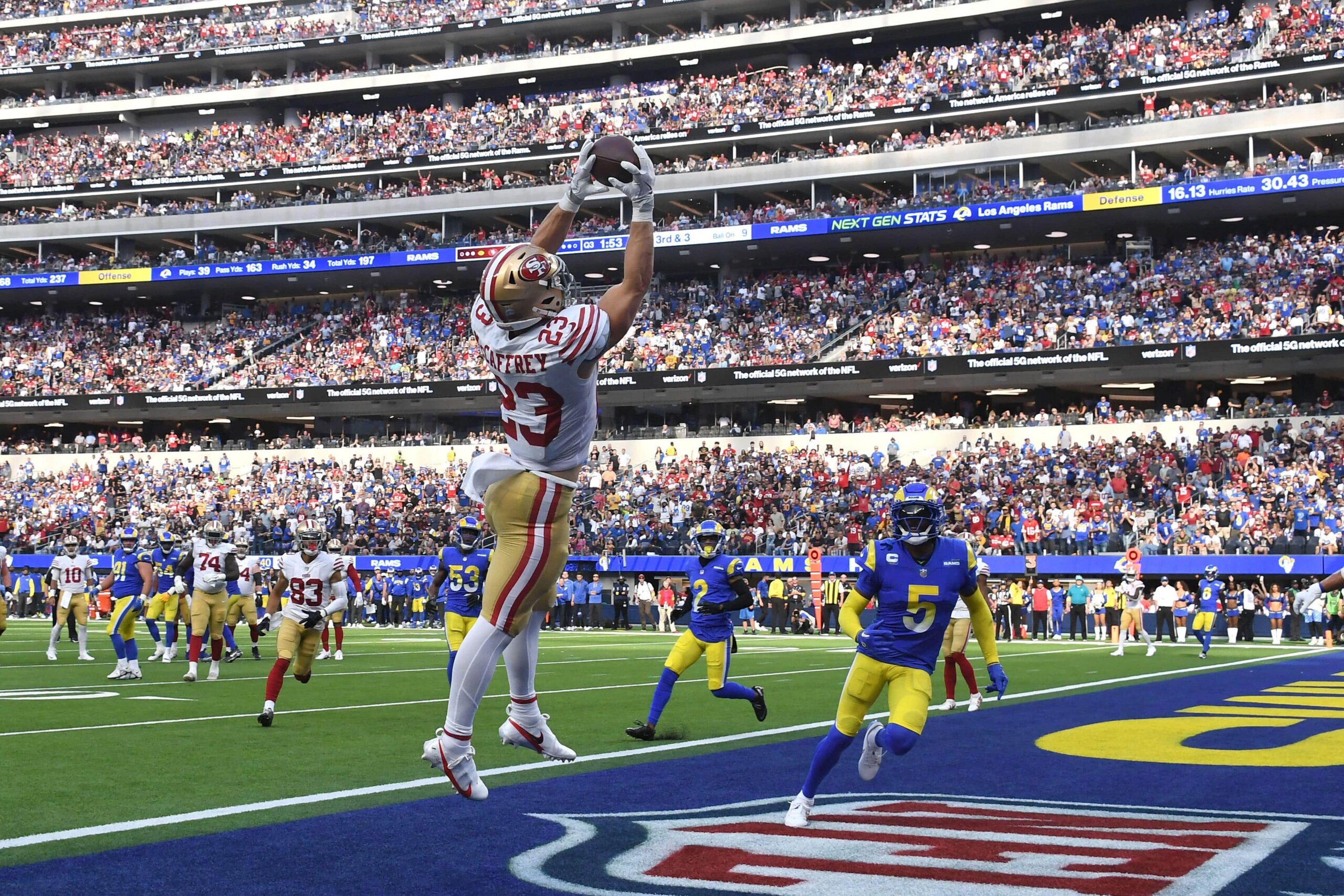As a follower of multiple sports, it's an interesting exercise to consider what broad trends can be observed from sport-to-sport. One such shift has been the upending of the traditional roles of players and how they are deployed strategically, which have subverted how "the game is supposed to be played".
For several years now, it's been normal in soccer for strikers and centre backs to move into midfield, with fullbacks now being the latest interlopers into the centre of the pitch. "Five-out" lineups in basketball are now a standard part of a teams' options and adjustments, while the Denver Nuggets have just won an NBA title with the league's best passer who also appears able to score from anywhere on the court playing at center (admittedly a bit of a unicorn). Meanwhile, the England Men's Test cricket team have successfully ignored almost 150 years of conservative orthodoxy and replaced it with ultra-attacking cricketers and game-plans.
Football has seen a similar movement, with the most notable and acclaimed proponents being Kyle Shanahan’s San Francisco 49ers. "Position-less football" has seen them lining up running backs and receivers outside of their traditional roles to great success.
This conversation could go on for hours—so thankful to be in these.#NFLLIVE@realrclark25 @mspears96 @minakimes @laurarutledge@49ers pic.twitter.com/7HjD7IFcgt
— Dan Orlovsky (@danorlovsky7) January 17, 2023
Backfield alignments
A key feature of this style was the 49ers mixing up personnel and their roles in the backfield to a much larger extent than has been typical in the NFL. A common sight was star receiver Deebo Samuel lining up next to the quarterback, or running back Christian McCaffrey and the do-everything Kyle Juszczyk on the line-of-scrimmage ready to run routes downfield.
On passing plays, the 49ers favorite personnel groupings were 11 (1 RB, 1 TE), followed by 21 (2 RB, 1 TE, which is the personnel group discussed in the video above from ESPN). The figure below shows the proportion of plays out of 11 personnel where a team lined up with an empty backfield - San Francisco led the league in this measure. The Dolphins, led by former 49ers offensive coordinator Mike McDaniels, were narrowly behind them this past season.

Figure 1: Proportion of plays with an empty backfield on passing plays out of 11 personnel (1 running back & 1 tight end) by teams in the NFL 2022 season.
On such plays, Christian McCaffrey could be found splitting his time between tight end, in the slot and out wide. He was the targeted receiver on 31% of these plays when he was on the field, which led the team and was ahead of the similarly positionally-flexible Deebo Samuel at 27%.
From a performance standpoint, the 49ers ranked 4th in Expected Points Added (EPA) per play when passing out of 11 personnel overall. With an empty backfield, they ranked 5th out of the 18 teams running more than 50 plays with such an alignment with an EPA per play of 0.14. Worthy of note here is that this was a much stronger performance than the rest of the top-5 in Figure 1; only the Dolphins with 0.05 EPA per play had a positive efficiency.
We can flip the backfield analysis around and examine what player roles look like when aligned in the backfield (whether this is from 1 or 2 running back sets). The 49ers ranked second in EPA per play on passing plays where players in the back field were running routes, behind only the Chiefs.
The figure below shows target and route run rates by receivers in the backfield and highlights the 49ers primary options, as well as McCaffrey at the Panthers prior to his trade in October.

Figure 2: Target rate vs route run rate on passing plays by players lined up in the backfield in the NFL 2022 season. Dashed lines indicate average rates in the sample. Minimum of 50 plays per player.
Deebo Samuel comfortably led the league in target rate from the backfield on passing plays, and was narrowly behind only McCaffrey (while at the 49ers) in route run rate. McCaffrey’s target rate was actually higher at the Panthers but he was close to average in terms of route running; he was much more of a potential receiving option on the 49ers rather than being deployed in a blocking role.
Whether they were lined up in the backfield, or in empty formations, McCaffrey and Deebo were running routes and there was clearly a strong prospect of them getting thrown the ball.
Profiling player alignment versatility
We can get a bigger picture view of the versatility and role of receivers in the passing game via a data dimensionality reduction method called Principal Component Analysis (PCA) to summarize our input data and visualize it in 2-dimensions. We do this by calculating the proportion of the plays in which a player is aligned at wide receiver, slot receiver, tight end, tailback and fullback, which is then fed through the PCA model.
The method transforms the data so that the variation between the input variables can be described in fewer dimensions - as we have 5 alignment groups, we’d need to visualize/examine the data in 5-dimensions to attempt to draw conclusions, so this reduction to fewer dimensions means we can more efficiently find patterns in the data.
Below we plot the first two principal components and color the points by roster position. Points closer together can be interpreted as being more similar e.g. Juju Smith-Schuster and Marquez Valdes-Scantling had very similar proportions in each alignment position on the Chiefs, and are consequently very close to each other on the figure below.

Figure 3: Principal component analysis of player alignment position in the NFL 2022 season. Players are coloured by their rostered position, aside from those on the San Francisco 49ers who are highlighted in red. Minimum of 100 plays per player.
Broadly speaking, tight ends can be found in the top-left and wide receivers towards the bottom-left, with slot receivers in-between. Running backs are offset from the primary receiving roles due to the much larger proportion of plays where they are lined up in the backfield. Players with unusual alignment profiles like the Ravens’ Patrick Ricard and Kyle Juszczyk are clearly distinct from their peers towards the top of the figure.
Juszczyk, notionally a running back, spent significant time across all 5 of the alignment positions considered above - among running backs with at least 100 snaps on passing plays, he had the second lowest proportion in the backfield. He sits at 34% between Ricard at a staggeringly low 16% and the Dolphins’ Alec Ingold at 37%. There is then a chasm to the Falcons’ noted backfield route runner, Cordarrelle Patterson, at 63%.
Deebo Samuel’s mixed profile as a wide receiver and backfield route runner sees him separated from other wide-outs. McCaffrey is on the edges of the running back cluster and distinguishes himself as a rare mix of being a genuine receiving option in the passing game, while also getting through a significant volume of work in the running game. George Kittle and Brandon Aiyuk round out the 49ers receiving core by profiling as broadly normal tight ends and wide receivers respectively.
Conclusion
By examining our personnel and alignment data, we can profile team strategies and player roles in great detail. The much acclaimed flexibility of the San Francisco 49ers is clear, led by the outlier profiles of Juszczyk, McCaffrey and Samuel coupled with the more traditional roles played by Kittle and Aiyuk.
In the constant search to gain the upper-hand in a contest, developing non-traditional strategies and the positional and tactical flexibility of players is a continuing theme across many sports in the modern era. The highest levels of football are no different and with a new season rapidly approaching, we’ll all be keeping a close eye out for the latest innovations on the field.
